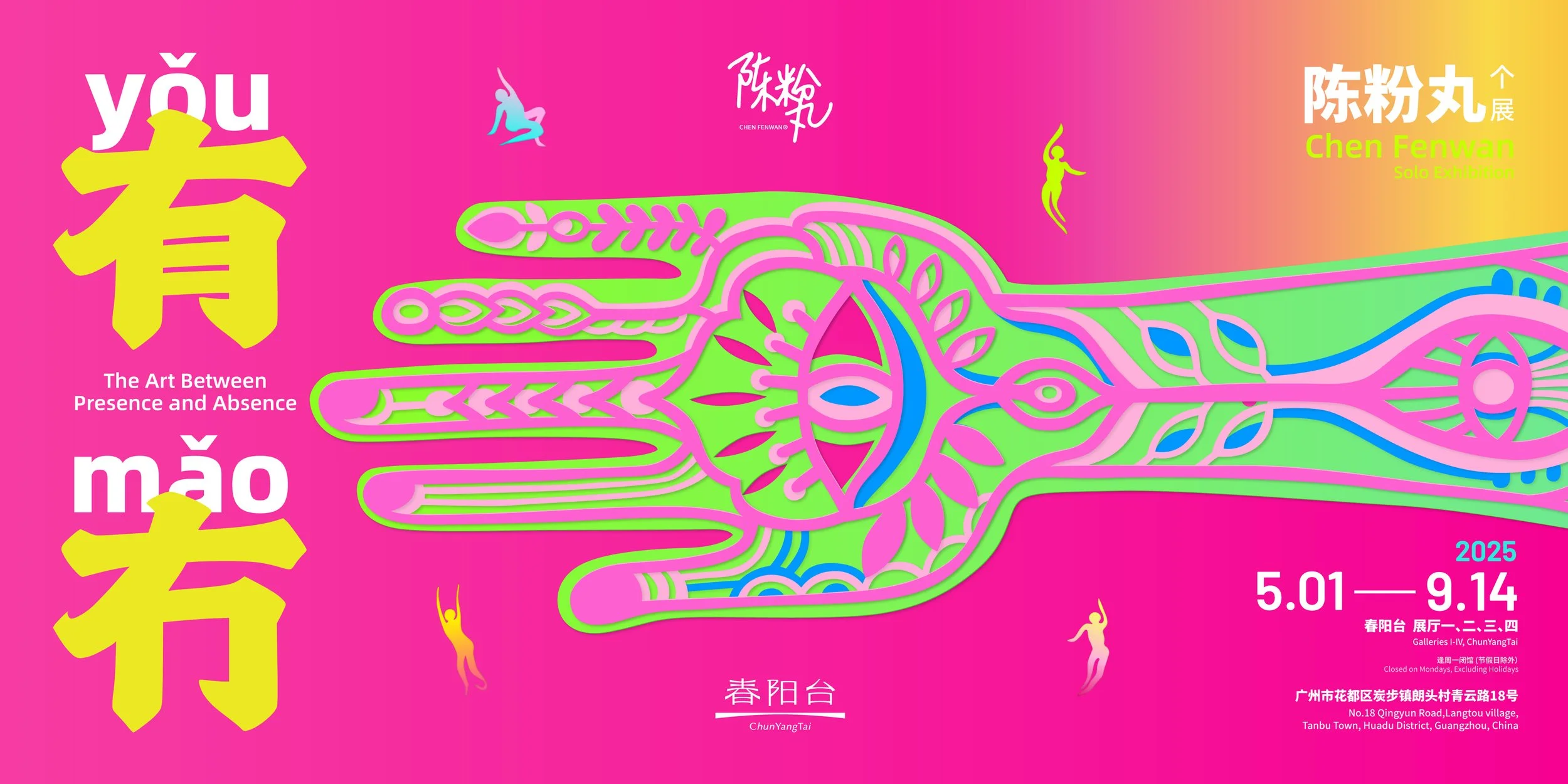“有,冇” 陈粉丸个展
Yǒu, Mǎo: The Art Between Presence and Absence - Chen Fenwan Solo Exhibition
1 May. 2025 - 29 Sep. 2025
ChunYangTai, Guangzhou, China | Solo Exhibition
2025年5月1日,艺术家陈粉丸的全新个人展览“有,冇”于春阳台拉开序幕。
On May 1st, 2025, Chen Fenwan’s latest solo exhibition Yǒu, Mǎo: The Art Between Presence and Absence opened at ChunYangTai.
本次展览由艺术家陈粉丸本人担任策展人,标题 “有,冇”,取自粤语中的一对反义词,包含着陈粉丸对剪纸技法的理解与身份的指认。“冇”读作 “mǎo”,陈粉丸是广州人,“冇”在粤语日常交流中随处可见。从文字字形来看,“冇”在“有”的基础上减去两横,以中空字形表示“无”,这种文字的意趣与其剪纸作品中想要探讨的“在场”与“缺席”相互呼应。
Curated by the artist herself, the exhibition takes its title from a pair of antonyms in Cantonese. “冇” (pronounced mǎo)—commonly used in everyday speech in Guangzhou, the artist’s hometown—is formed by subtracting two strokes from the character “有” (yǒu, “to have”), visually representing absence through an emptied structure. This interplay of form and meaning echoes the central exploration of Fenwan’s paper-cutting practice: the dialectic of presence and absence.
展览“有,冇”并未遵照过往个展所采用的“极繁”“归档式”的呈现方式,陈粉丸选择以“取舍”“过去与当下”与“手”为切入点,层层递进展开,将个体经验与剪纸媒介之间长期的联属共生关系,转化为一次自我定义与结构性回应的过程。
Unlike her past exhibitions marked by exuberance or archival tendencies, Yǒu, Mǎo unfolds through three interwoven threads: Constructive Subtraction, Past and Present, and The Hand. These themes construct a layered narrative of the artist’s long-standing symbiosis with the medium of paper cutting—a process that embodies self-definition and structural response.
• 欢迎收看丸丸的布展Vlog •
Click it to watch the vlog of the installation process!
取舍
展览从“取舍”开始,这是剪纸的基础动作,刀刃触碰纸张的瞬间,粉丸总问自己“有定冇?(有还是没有?)”
她将剪纸视为一种阴阳的媒介哲学,每一个图案生成的背后都蕴藏着判断与选择——留下的为“正形”,被舍弃的为“负形”。在粉丸与剪纸合作的十余年中,剪纸早已超越技法本身。从最初对形态的创作和把握,到如今深入本质的思考,在剪刻纸张的过程中,她捕捉到了在场与缺席的辩证关系。《剪纸宇宙》这一系列作品是粉丸对“形”的归档与回溯,也是对物质与虚空、具象与抽象之间张力的探询。
Constructive Subtraction
The exhibition begins with the act of choosing and cutting, the fundamental gesture of paper cutting. At the moment the blade touches the paper, Fenwan often asks herself, “Yǒu ding mǎo? (To keep or to let go?)”
To her, paper cutting is a medium that embodies the philosophy of Yin and Yang. Every pattern involves a decision: the positive shapes that remain, and the negative shapes that are cut away. Through over a decade of collaboration with this medium, Fenwan’s inquiry has moved beyond form into essence. Her series The Universe of Paper Cutting archives the evolution of shape and explores the tension between matter and void, figuration and abstraction.
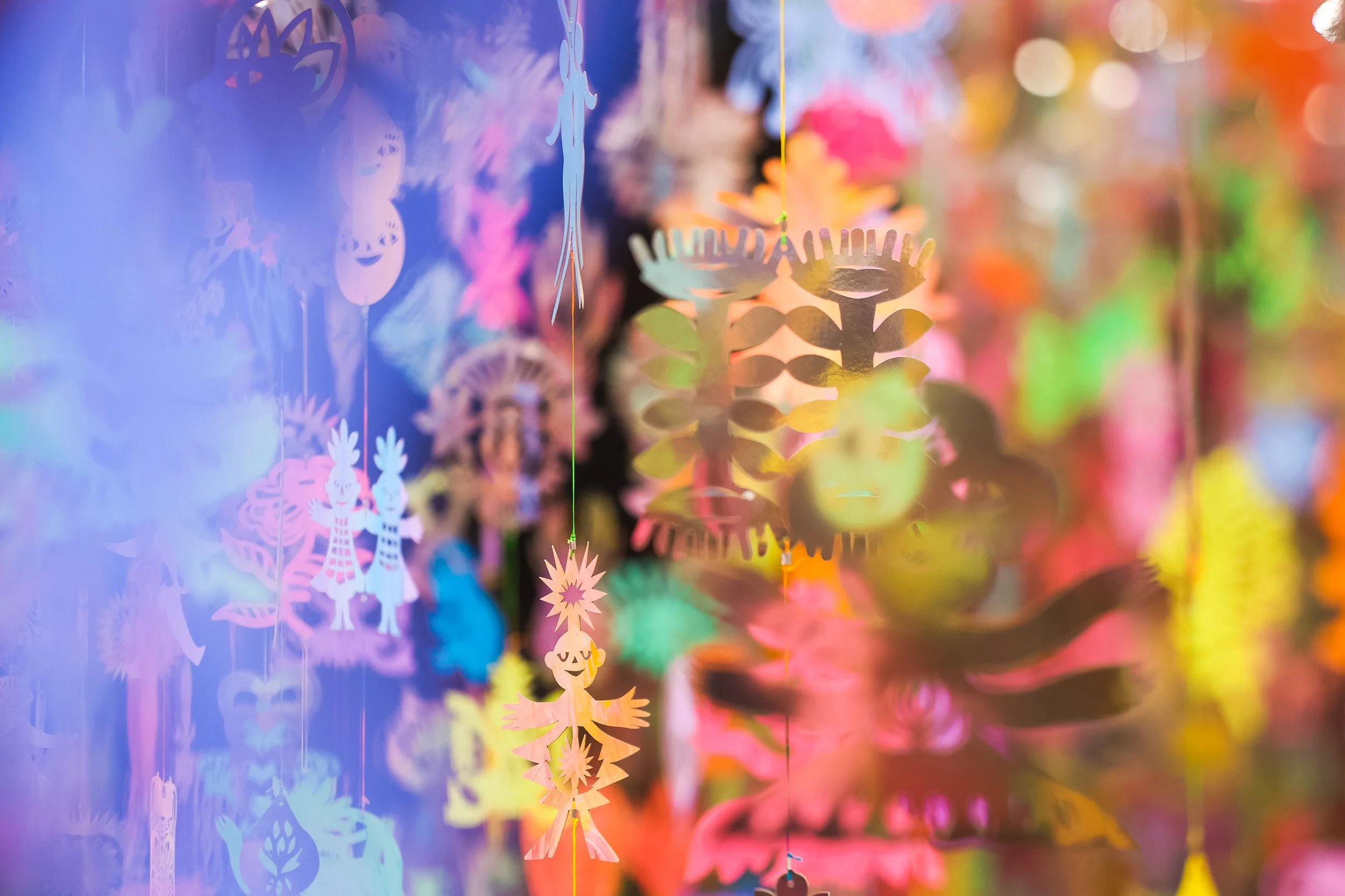

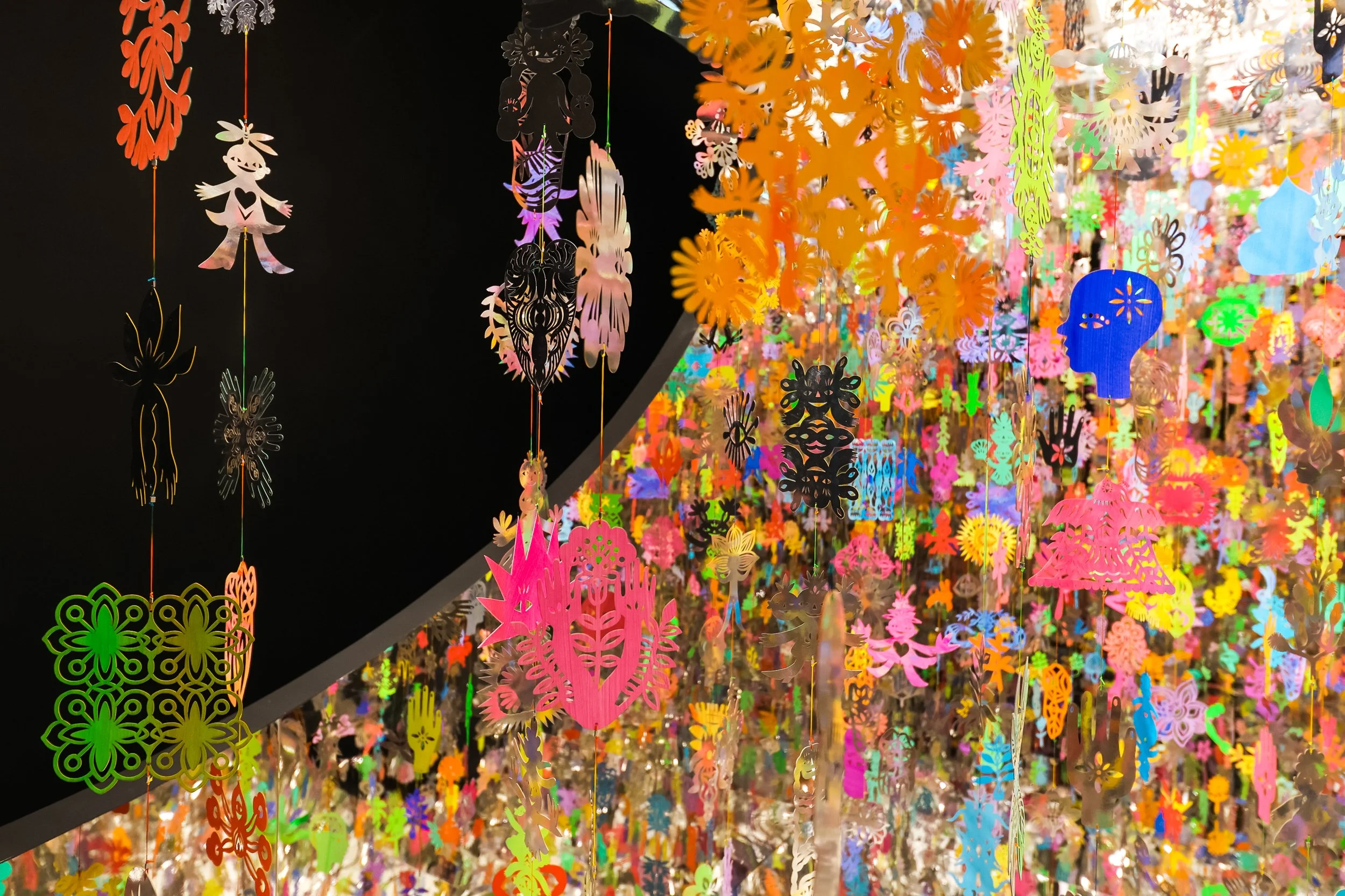


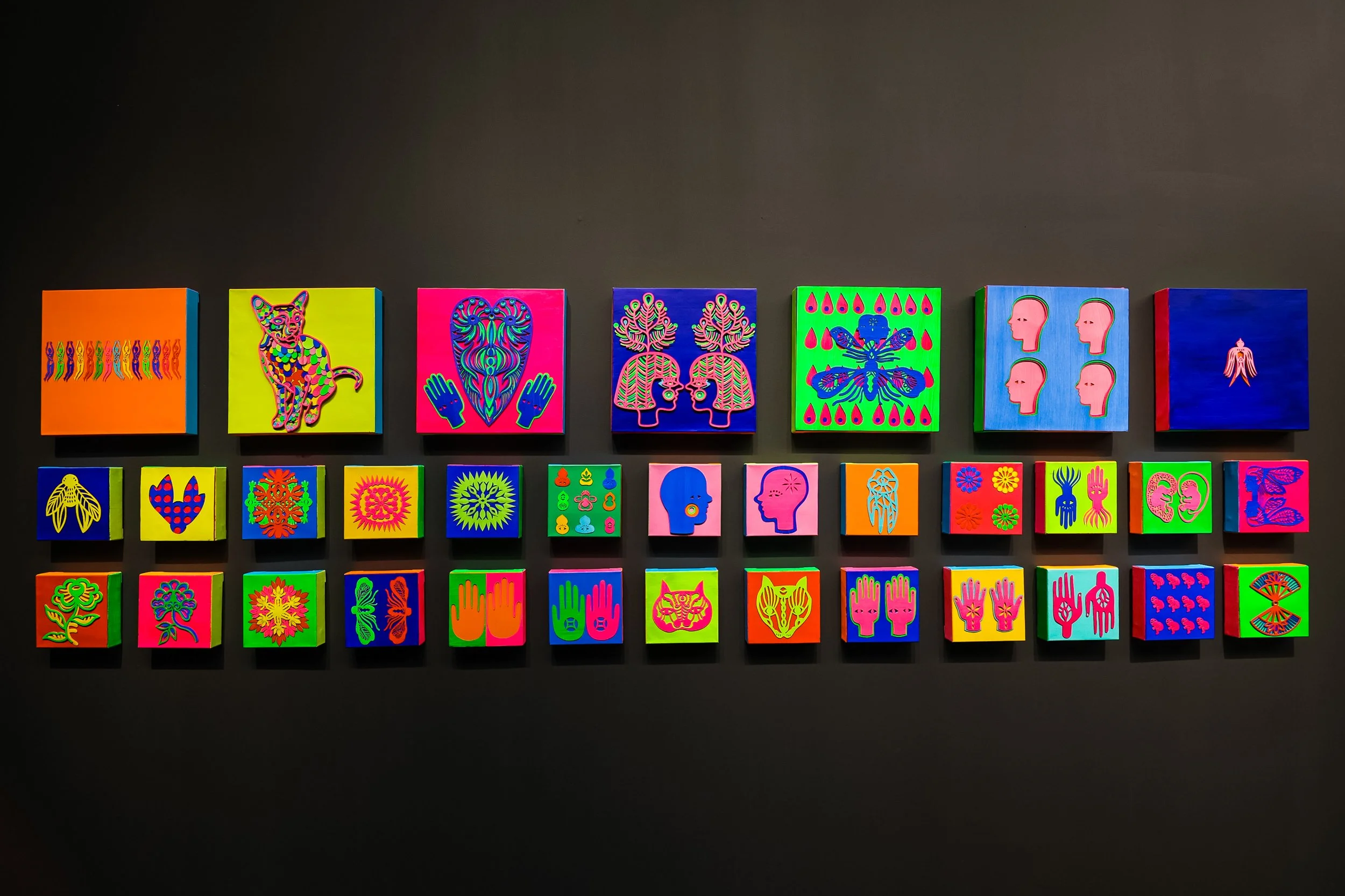


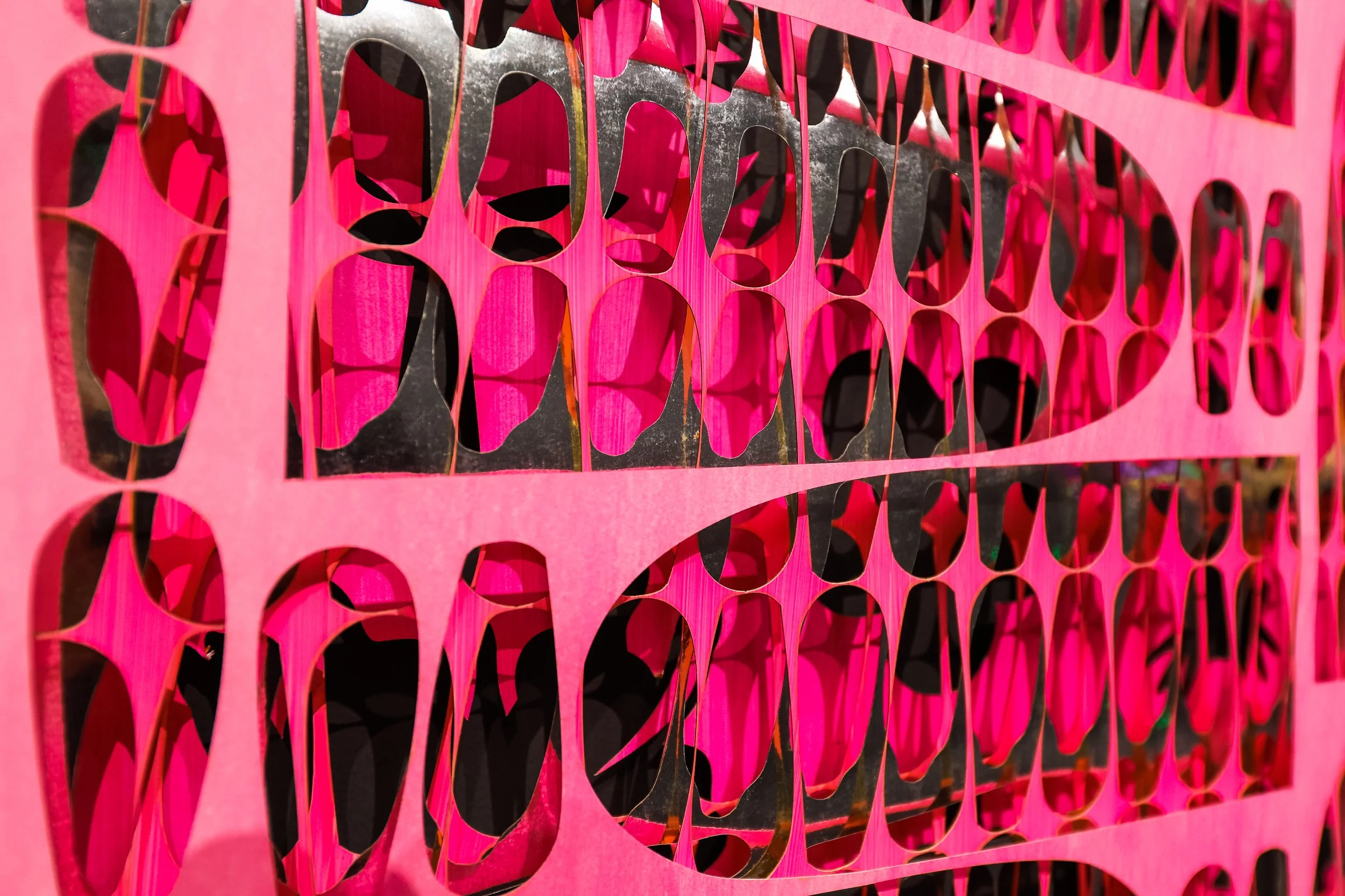
过去和当下
在塱头古村和在地新生的春阳台的并置之中,我们所体验的“当下”,并非是彻底告别过往的结果,而是一次次选择与取舍之后所被激活的现在。那些遥远的乡村历史,通过器物、书室与祠堂等线索,在今天被粉丸重新编织。
粉丸说:“好久没回家乡做展览了……我知道春阳台在炭步镇时,就把我儿时所有的好奇心都调动了出来。因为我外婆是炭步镇人,炭步芋头是我从没吃过但听说过很多遍的东西。而我其实自己没有在这待过,也没有真正的以某种方式回来过。”
在这片并非艺术家亲身生活过的村落中,她以记忆、想象与感知作为连接的方式,试图抵达一种不依赖于地理概念的情感归属。
展厅二和展厅三聚焦于“过去与当下”,分别呈现《不息》《空竹存忆》两件装置作品。
《不息》是粉丸的代表作之一,脱胎于她“要做一个永远做不完的作品”的创作野心,以纸张这种脆弱易朽的媒材,叩击关于无尽与不朽的想象。它以无限延展的纸雕版画节点呈现龙骨的形态,通过点与线的组合,在不同空间中持续生长。
《不息》中关于“龙”的想象和塱头村中“谷诒书室”的水墨云龙壁画《教子朝天图》不期而遇,传统与当代于此交织碰撞,一个象征着文化根脉的传承,一个诠释着无限的可能性和无止境的创造力。它们以不同的形态,回应着同一条流动不息的时间之河。
《空竹存忆》探讨的是粉丸与母亲的代际关系如何通过 “竹” 彼此回应——她的纸艺装置与母亲的水墨竹画,以不同艺术语言映照过去与当下,让情感、时间与记忆借 “竹” 这一纽带得以显现。
“过去与当下”仅是对线性时间的界定,然而,在粉丸的创作中,传统不是一种静止的象征,它被放置在流动的语境中,与当下发生化学反应。这种关系既非复刻,也非切割,而是一种彼此嵌套、互为支点的织就过程。
Past and Present
In the encounter between the newly emerged ChunYangTai and the time-honored fabric of Langtou Village, the present is not a rupture from the past but a layering of choices and inheritances. Traces of local history—through objects, ancestral halls, and village study rooms—are rethreaded into today by Fenwan.
“I haven’t done an exhibition this close to home in a long time… When I learned ChunYangTai was in Tanbu Town, it stirred my childhood curiosity,” Fenwan shares. “My grandmother was from Tanbu, and I’ve heard countless stories about its famous taro, though I’d never actually eaten it myself. I’ve never truly returned here—at least not in any intentional way.”
Though she didn’t grow up in Langtou, she seeks an emotional kinship not through geography, but through memory, imagination, and sensory resonance.
Galleries II and III center on Past and Present, featuring the installations Infinite and Bamboo as Our Bond.
Infinite, one of Fenwan’s signature works, was born of her ambition to create a piece “that could never be completed.” Using fragile paper to imagine the infinite, the work resembles the keel of a ship, constructed from modular paper-cut nodes. It grows through space, always unfinished, always unfolding.
In Infinite, the dragon motif unexpectedly echoes the ink mural Teaching the Son to Face Heaven in Gu Yi Ancestral Hall—a monochrome depiction of clouds and dragons. Here, tradition and the contemporary collide: one a symbol of cultural legacy, the other a vision of endless potential. Together, they flow along the same river of time.
Bamboo as Our Bond explores Fenwan’s intergenerational connection with her mother through the motif of bamboo. Her own paper installation dialogues with her mother’s ink bamboo paintings, creating a bridge across time, emotion, and memory through shared material language.
In Fenwan’s work, tradition is not static. It moves, evolves, and converses with the present—not as replication or rupture, but as nested co-existence. The past and present are not opposites, but interwoven.
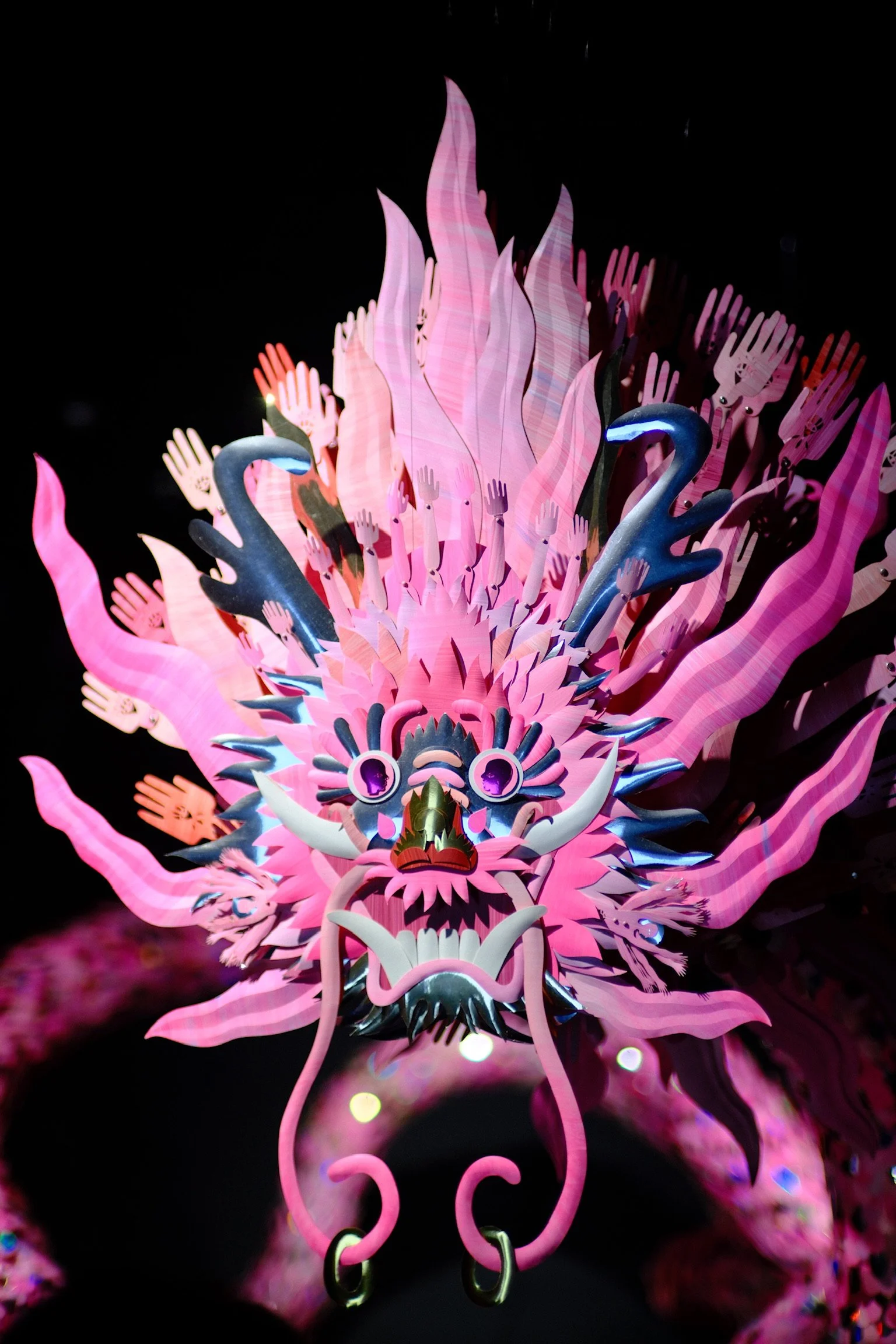
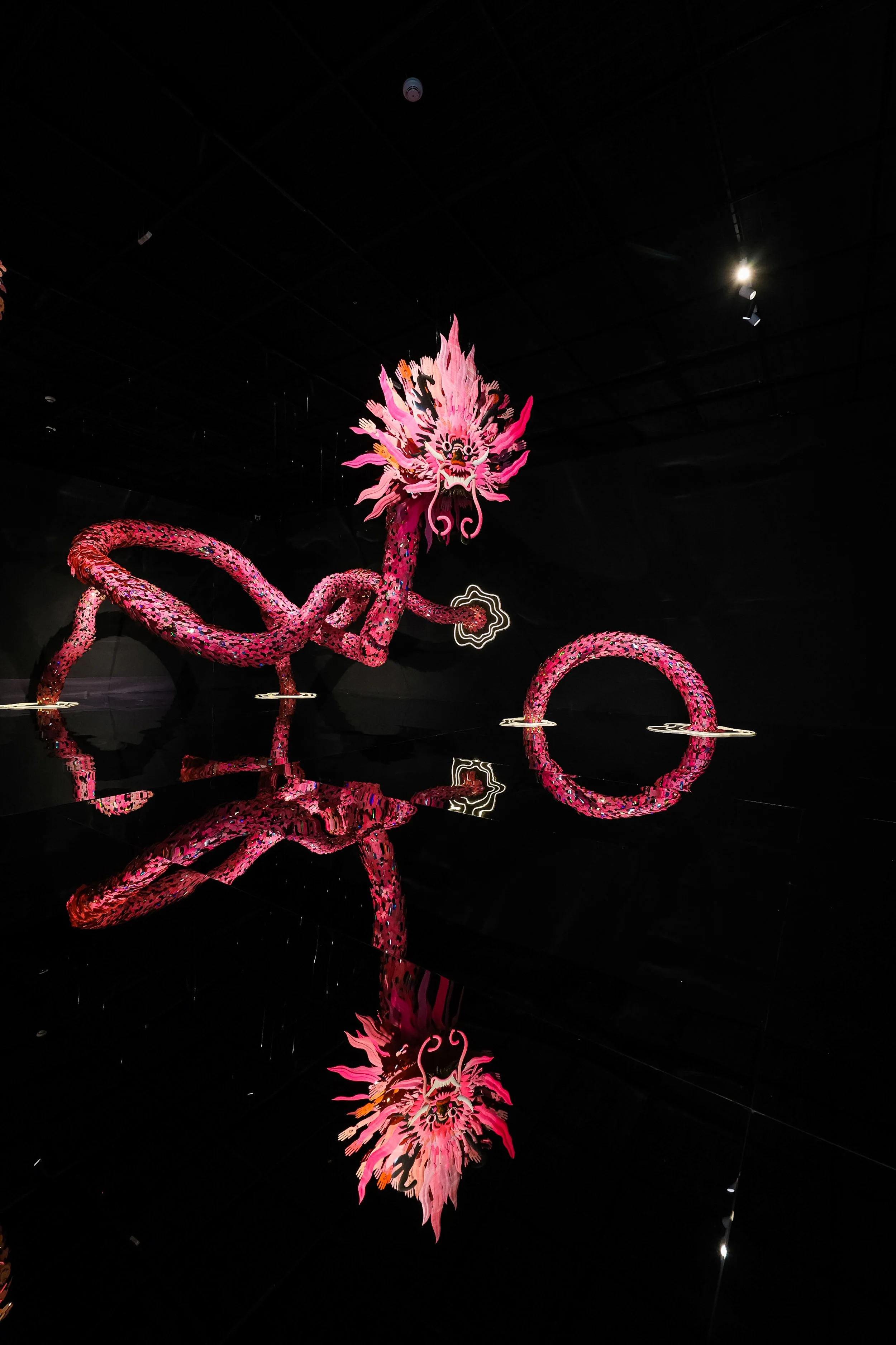
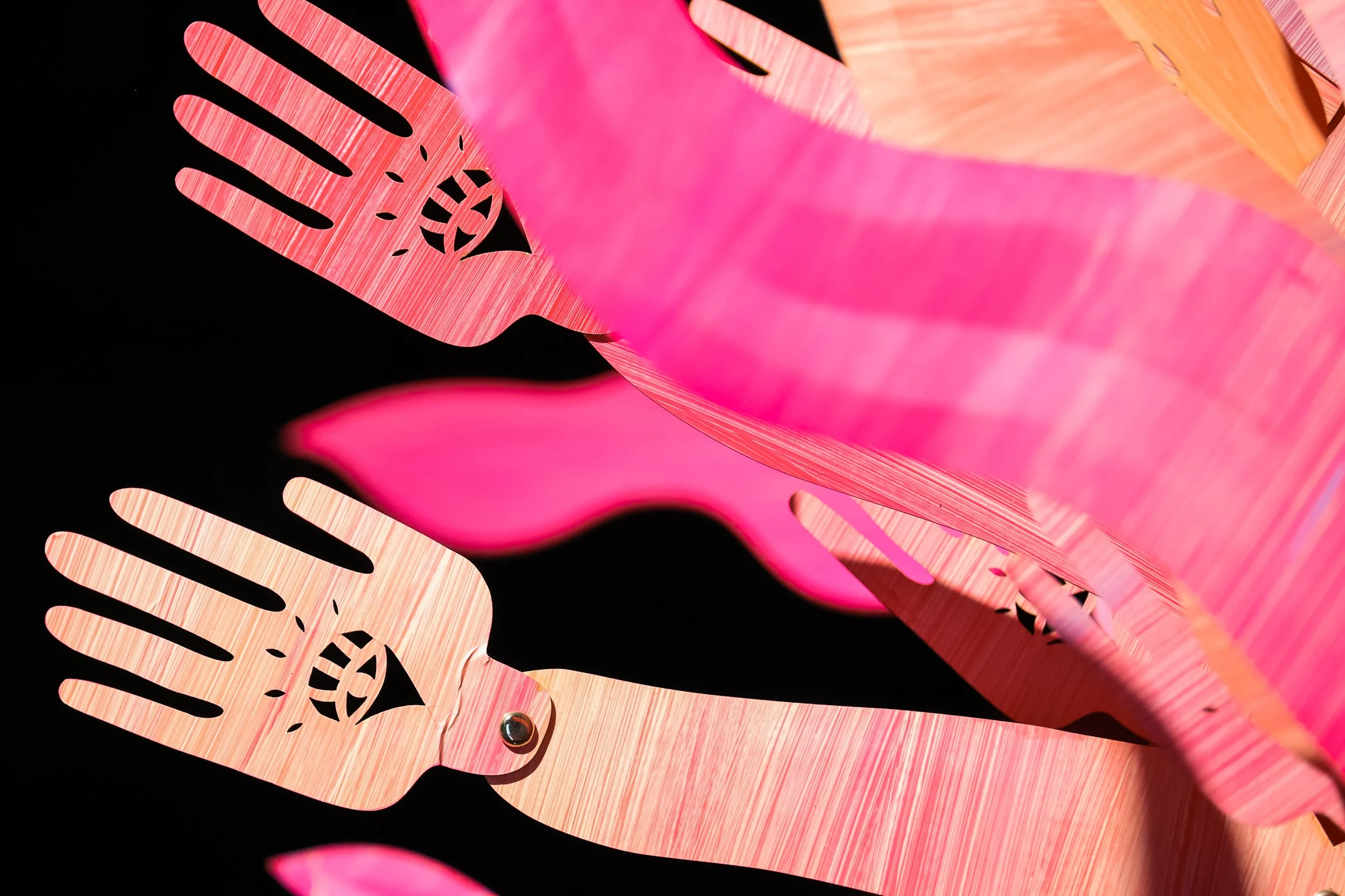
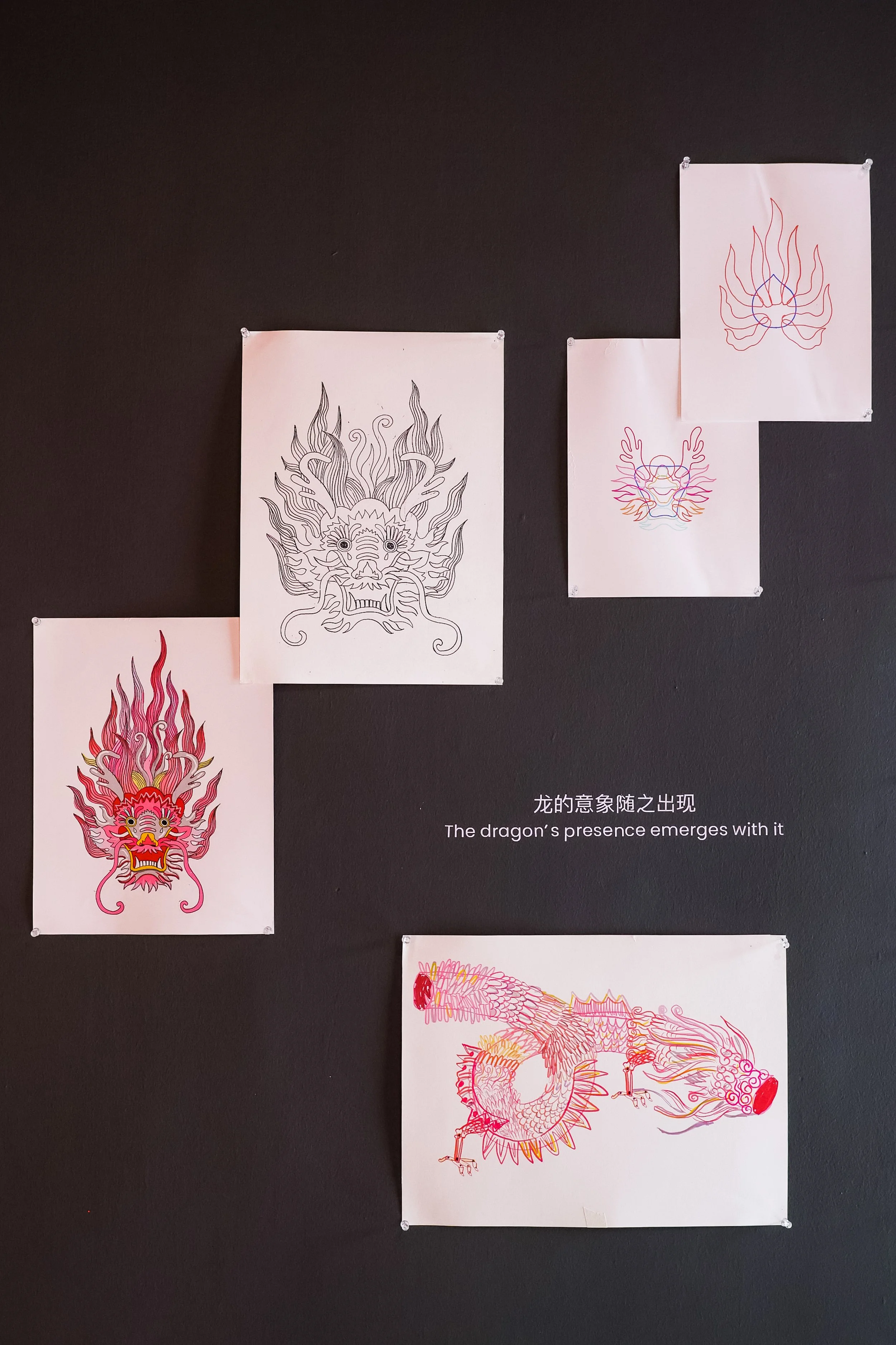
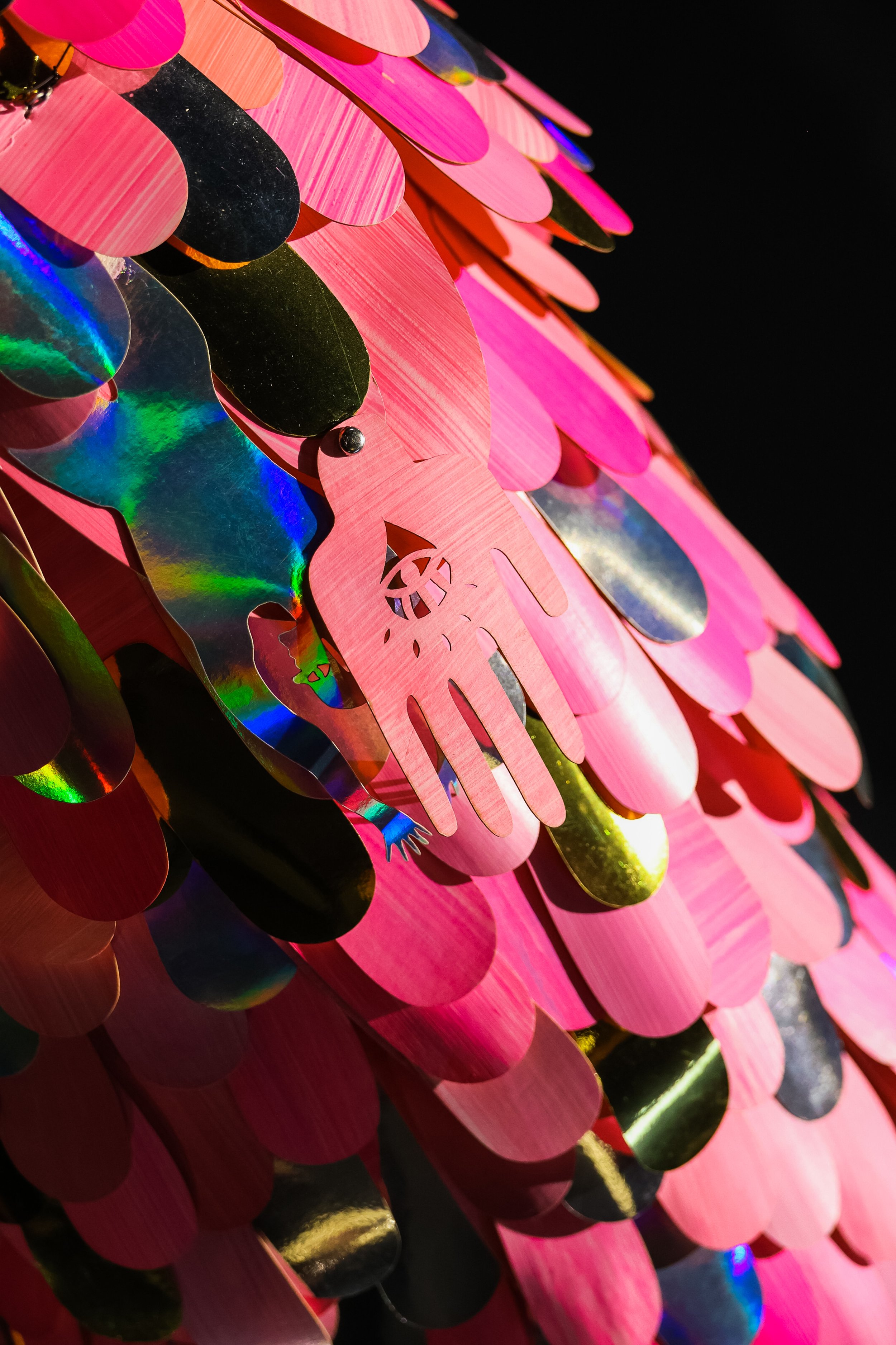
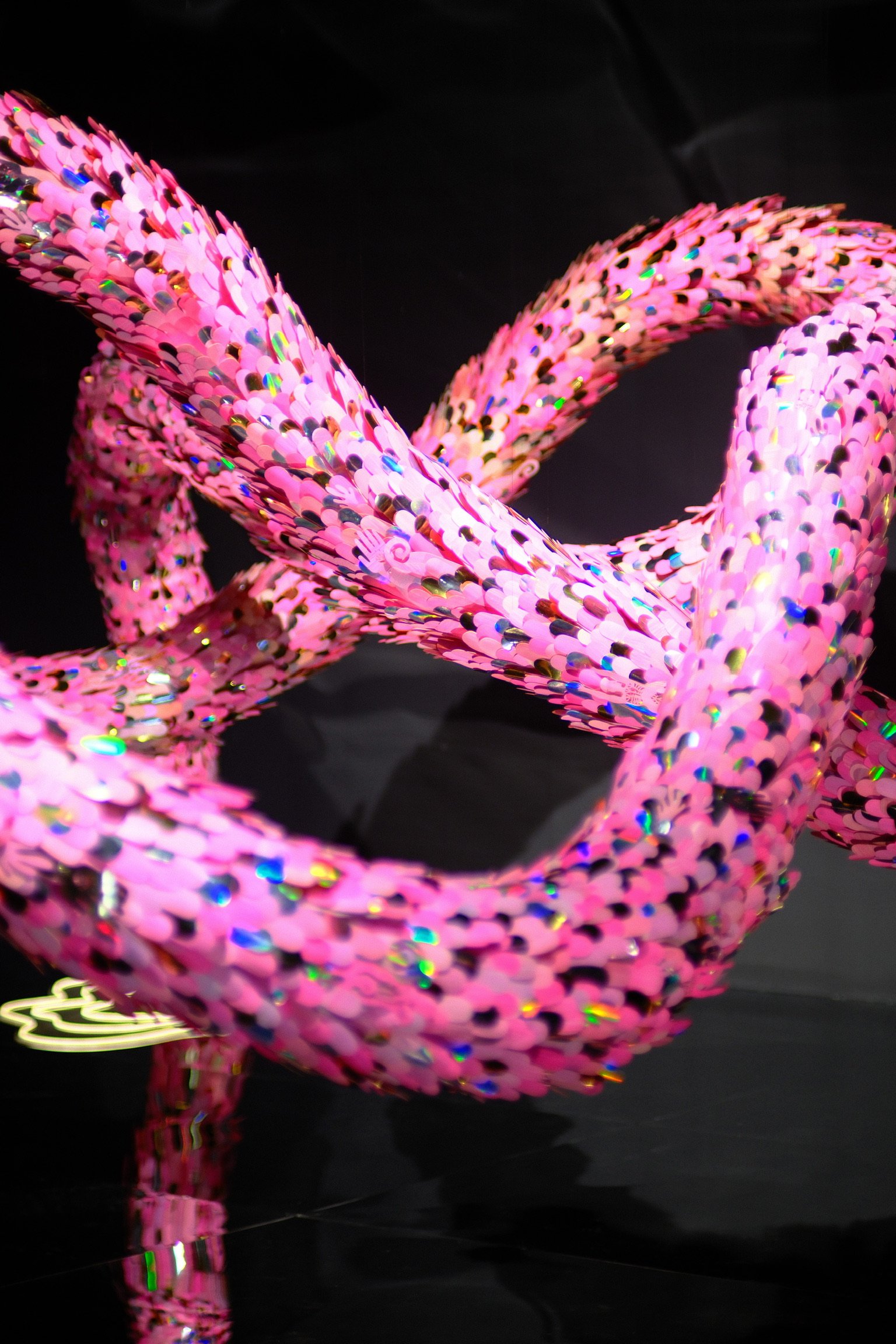

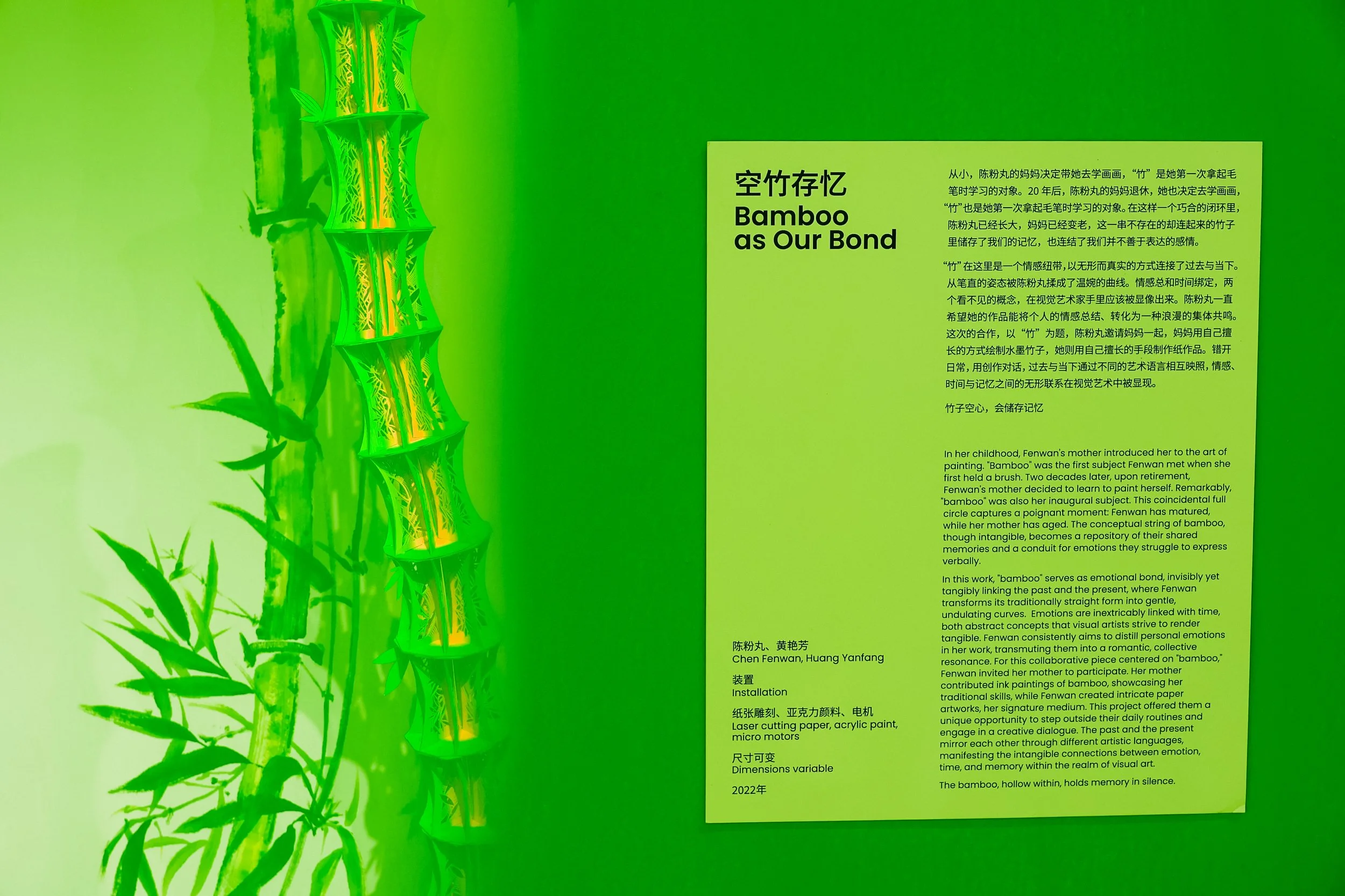


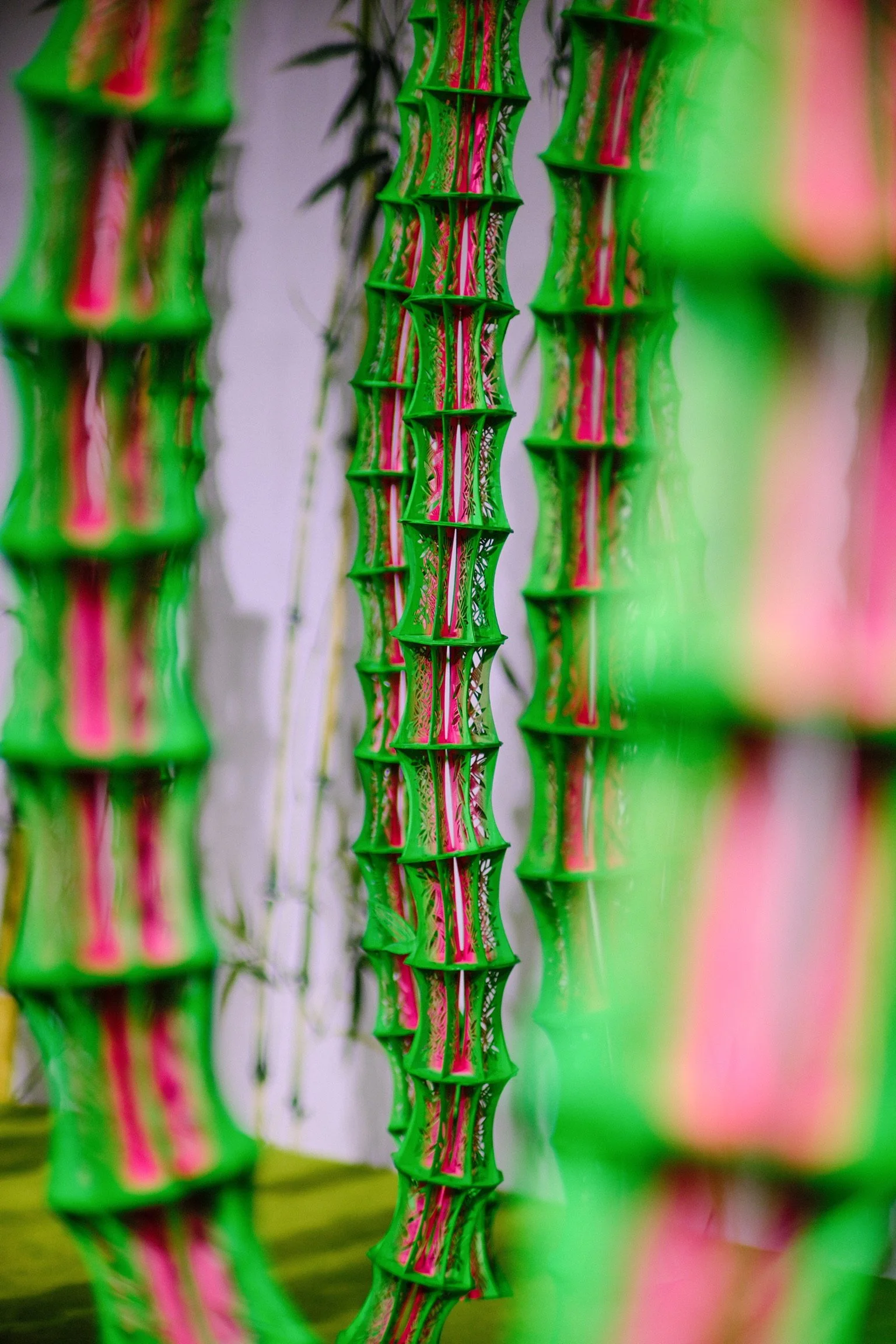
手
“手”是粉丸长期以来在创作中反复使用的元素。手,既是动作——“相手术”“手语”“手影游戏”“挥手”“动手术”和“制作手工书”的物质载体,也是她对“身体如何表达情感”的持续探问。展厅二楼的展厅四以这个视觉符号为主题,展出了一系列从“手”出发的作品:《转运花园》《手,孔雀,落叶》《假想敌一双》《挥手 对称初见与别离》《祝您健康》及若干件/组《手工书》。
陈粉丸对 “手” 的兴趣可追溯至童年。她曾提到,自己自幼便喜欢观察他人的手,至今仍保留着观察手部动作、装饰及形态的习惯,这些细节似乎能传递出关于性格、身份与情绪的答案。而 “手” 的深层内涵,则源于她的成长经历。在不常用语言表达爱的家庭中,父母的手部肢体动作代替了语言的温柔:轻拍、挽手、挥手……这些动作成为她最初感知情感的方式,也成为她艺术实践中重要的情感符号。
她借由这个符号不断回返自身,也邀请观众在观看中,从她的私人经验出发,触碰那些未被言说却潜藏于集体记忆中的情感与支持。
在本次展览中,陈粉丸特别选用了塱头村中常见的古朴餐桌替代原作中的双色圆桌。塱头古村的一砖一瓦、一桌一凳,都承载着村民们质朴而真实的生活记忆。木桌,在塱头村的无数个家庭里,见证过亲友的欢聚,听过家常的絮语,其承载的村民围坐用餐的场景,也悄然回应了“聚”与“散”的命题。
The Hand
The Hand is a recurring motif in Fenwan’s practice. It is both action and symbol—appearing in sign language, shadow play, gestures of farewell, and the making of artist books. It is also the artist’s way of asking: how does the body express emotion? On the second floor, Gallery IV is dedicated to this theme. Works on view include Lucky Garden, Hand, Peacock, Falling Leaf, Imagine a Pair of Enemies, Wave Hands to Our First Meet and Last Goodbye, May Good Health Be with You, and several artist books.
Fenwan’s fascination with hands began in childhood. She recalls observing people’s hands—their gestures, adornments, and appearances—believing they revealed clues about personality, identity, and emotion. In a family where love was rarely expressed in words, it was through hands that affection was conveyed: a gentle pat, an entwined arm, a wave goodbye. These gestures became her earliest language of feeling, and a vital emotional lexicon in her art.
Through this recurring symbol, she continually returns to herself, while also inviting the audience to begin from her personal experience and reach toward those unspoken emotions and forms of support that lie hidden within collective memory.
In this exhibition, Fenwan replaces the original two-tone round table with rustic wooden tables commonly seen in Langtou homes. These tables—simple yet laden with memory—have witnessed countless gatherings and family meals. Their presence quietly speaks to themes of reunion and parting.


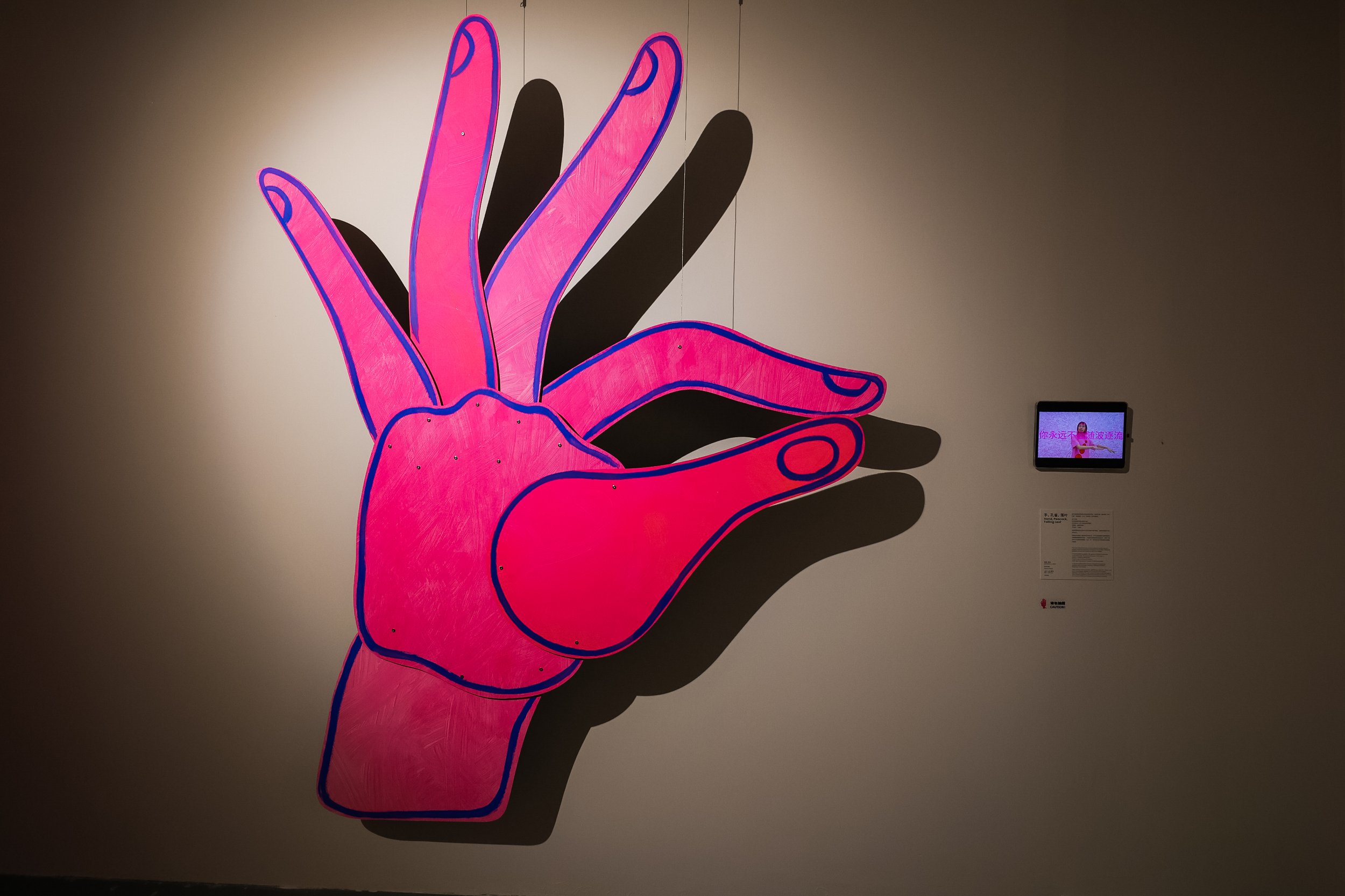
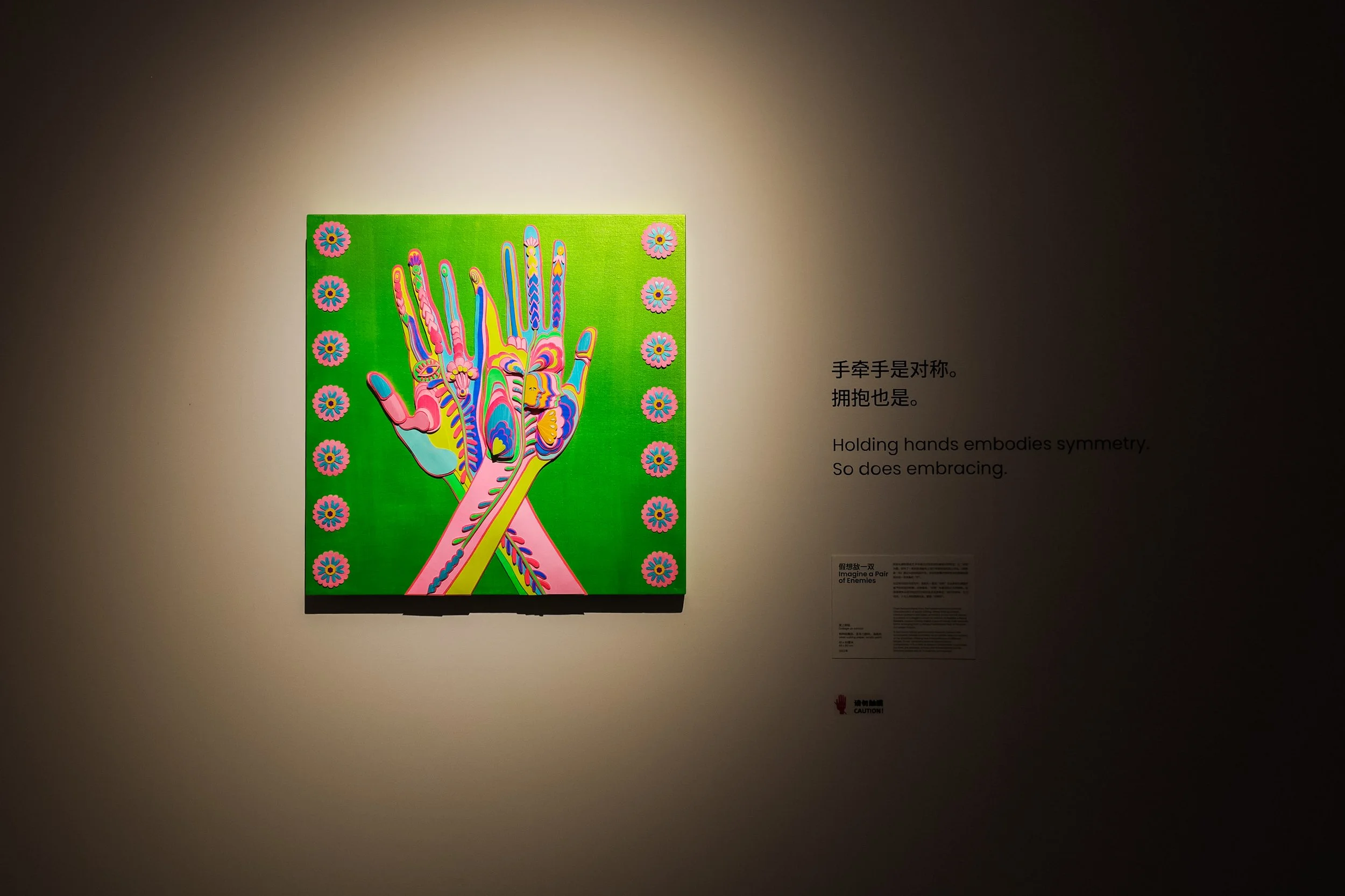


陈粉丸的艺术语言融入塱头古村的历史文脉——剪刀的坚硬与纸张的柔软、剪纸的阴与阳、传统技法与当代观念、个人经验与集体记忆,以及塱头的过去与未来,这一切都在展览的“有”与“冇”之间形成对立统一的张力。在不断的折叠、剪刻、与拼贴之间,陈粉丸以非对抗的互嵌创作方式,让矛盾成为创新的土壤,孕育出无限可能。
她个人艺术创作的这种策略,为我们该如何看待传统与现代、城市与乡野、在场与缺席等二元关系,提供了全新启示。或许,我们能从她的作品中汲取灵感,在生活的种种矛盾中,寻得和谐共生、创新发展的路径。
期待您走进艺术家陈粉丸的最新个展“有,冇”,观看、感受剪纸艺术的魅力与哲思,一同探寻未来更多的可能性。
Chen Fenwan’s artistic language weaves itself into the historical fabric of Langtou Village: the hardness of scissors and the softness of paper, the interplay of positive and negative shapes in papercutting, the dialogue between traditional technique and contemporary thoughts, between personal experience and collective memory, between Langtou’s past and its possible futures. Together, these elements form a dynamic tension between “Yǒu” and “Mǎo” at the heart of the exhibition. She embraces contradiction not as opposition, but as fertile ground—folding, cutting, and collaging her way into infinite possibility.
Her artistic methodology offers new ways to think about dualities: tradition and modernity, urban and rural, presence and absence. From her work, perhaps we may learn how to live with contradictions and how to craft spaces for coexistence, tenderness, and renewal.
You are warmly invited to step into Yǒu, Mǎo and experience the philosophical and poetic power of paper cutting—an art of presence, absence, and everything in between.
“有,冇”开幕对谈
粉丸剪纸——以互嵌瓦解二元对立
对谈嘉宾:曹丹、樊林、陈粉丸
对谈主持:沈旻Zoe
感谢各位老师及观众的参与,丸丸敬礼
👉💓💓💓💓💓




